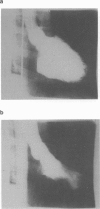Abstract
A previously healthy 26 year old woman who was exposed to smoke during a house fire developed acute anterior myocardial infarction complicated by ventricular fibrillation. Subsequent left ventriculography confirmed anterior infarction, but coronary arteriography was normal apart from myocardial bridging over a segment of the left anterior descending artery. The development of acute myocardial infarction in this patient suggests that, in the presence of bridging, carbon monoxide inhalation may cause regional infarction.
Full text
PDF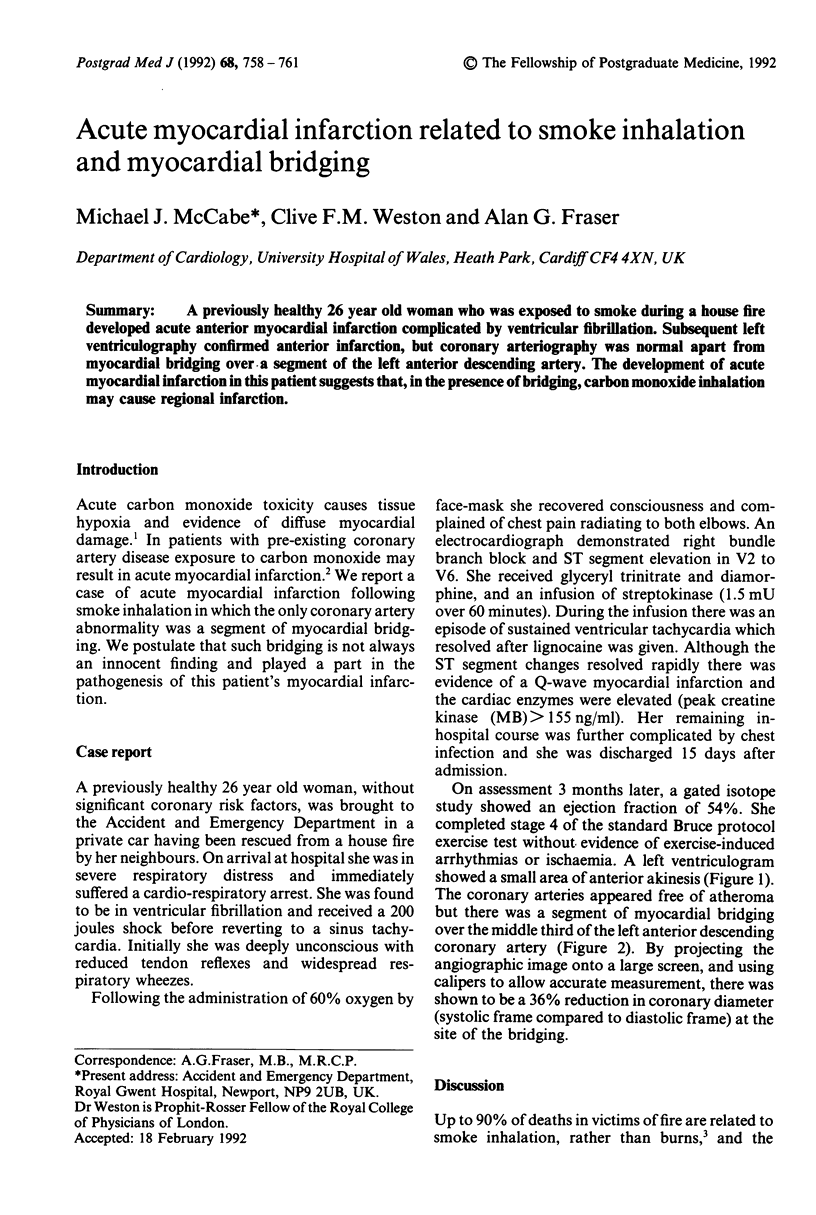
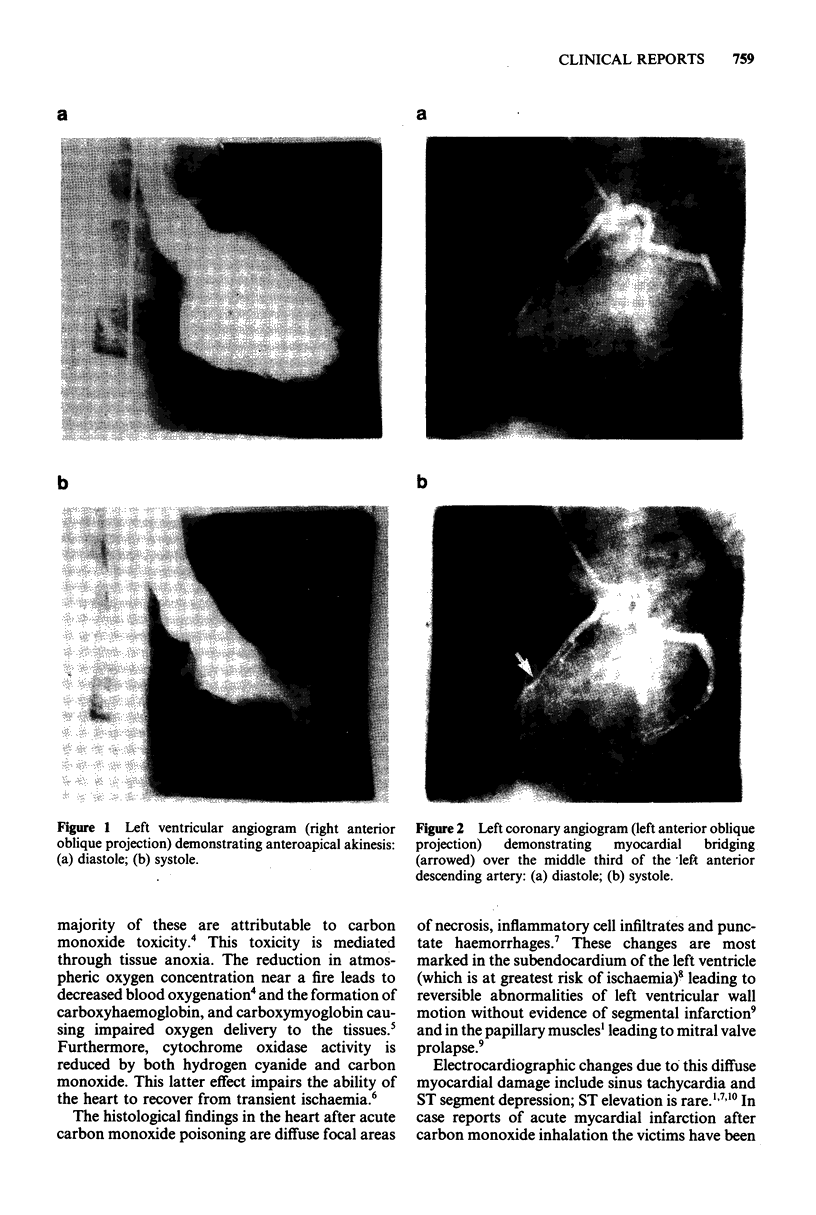
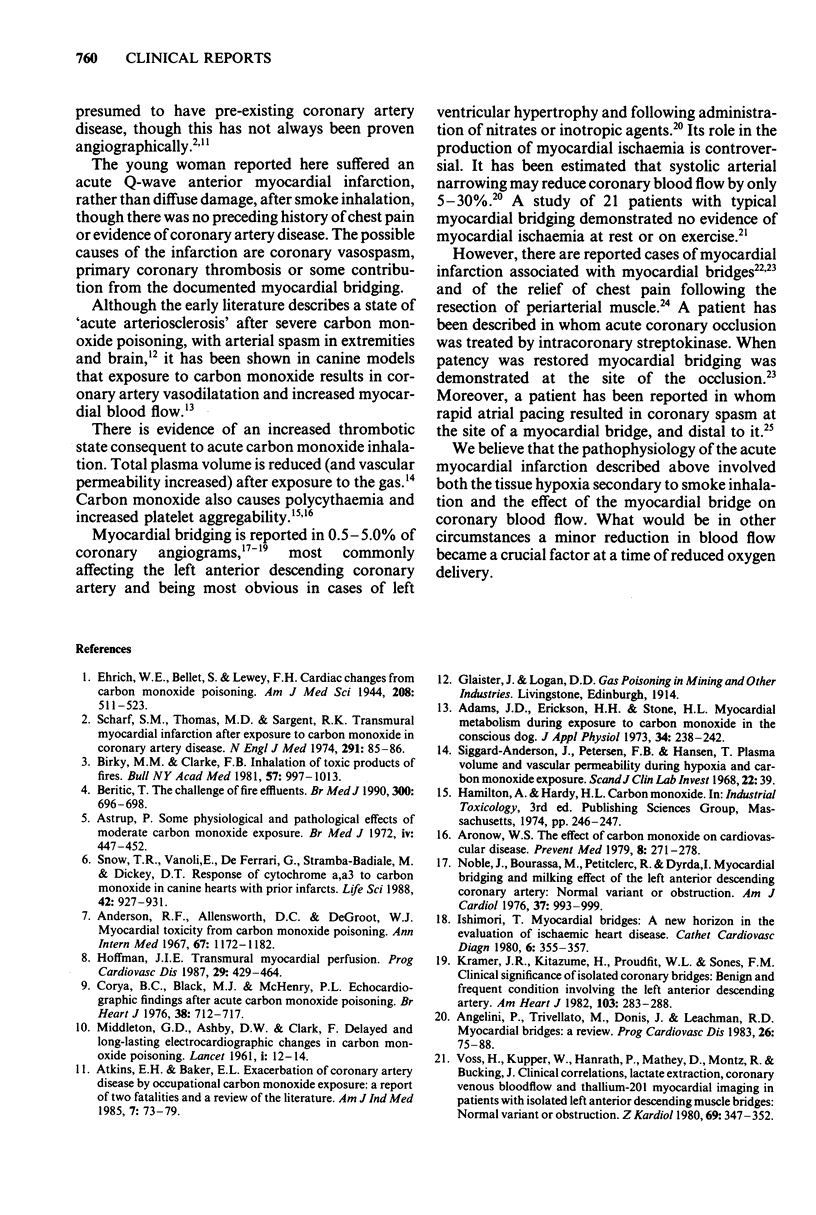
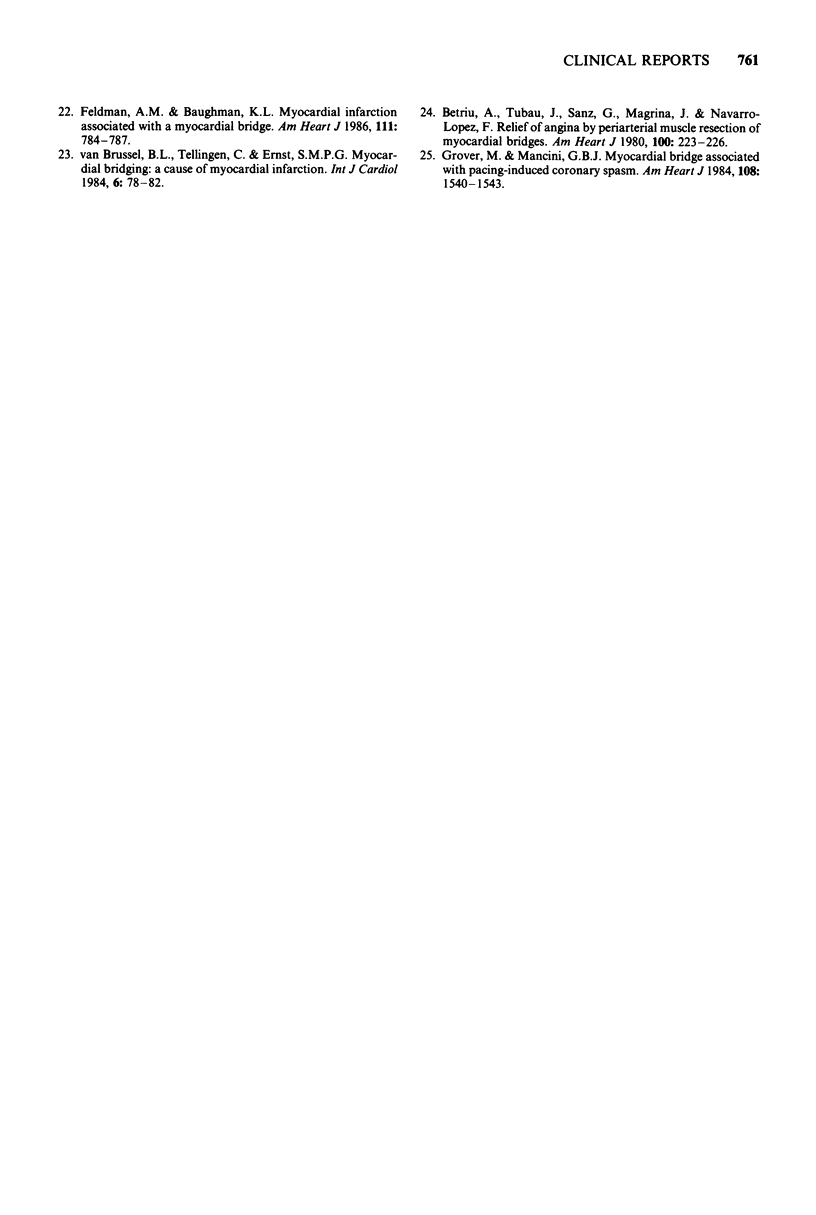
Images in this article
Selected References
These references are in PubMed. This may not be the complete list of references from this article.
- Adams J. D., Erickson H. H., Stone H. L. Myocardial metabolism during exposure to carbon monoxide in the conscious dog. J Appl Physiol. 1973 Feb;34(2):238–242. doi: 10.1152/jappl.1973.34.2.238. [DOI] [PubMed] [Google Scholar]
- Anderson R. F., Allensworth D. C., DeGroot W. J. Myocardial toxicity from carbon monoxide poisoning. Ann Intern Med. 1967 Dec;67(6):1172–1182. doi: 10.7326/0003-4819-67-6-1172. [DOI] [PubMed] [Google Scholar]
- Angelini P., Trivellato M., Donis J., Leachman R. D. Myocardial bridges: a review. Prog Cardiovasc Dis. 1983 Jul-Aug;26(1):75–88. doi: 10.1016/0033-0620(83)90019-1. [DOI] [PubMed] [Google Scholar]
- Aronow W. S. Effect of carbon monoxide on cardiovascular disease. Prev Med. 1979 May;8(3):271–278. doi: 10.1016/0091-7435(79)90003-3. [DOI] [PubMed] [Google Scholar]
- Astrup P. Some physiological and pathological effects of moderate carbon monoxide exposure. Br Med J. 1972 Nov 25;4(5838):447–452. doi: 10.1136/bmj.4.5838.447. [DOI] [PMC free article] [PubMed] [Google Scholar]
- Atkins E. H., Baker E. L. Exacerbation of coronary artery disease by occupational carbon monoxide exposure: a report to two fatalities and a review of the literature. Am J Ind Med. 1985;7(1):73–79. doi: 10.1002/ajim.4700070107. [DOI] [PubMed] [Google Scholar]
- Beritić T. The challenge of fire effluents. BMJ. 1990 Mar 17;300(6726):696–698. doi: 10.1136/bmj.300.6726.696. [DOI] [PMC free article] [PubMed] [Google Scholar]
- Betriu A., Tubau J., Sanz G., Magriña J., Navarro-Lopez F. Relief of angina by periarterial muscle resection of myocardial bridges. Am Heart J. 1980 Aug;100(2):223–226. doi: 10.1016/0002-8703(80)90118-0. [DOI] [PubMed] [Google Scholar]
- Birky M. M., Clarke F. B. Inhalation of toxic products from fires. Bull N Y Acad Med. 1981 Dec;57(10):997–1013. [PMC free article] [PubMed] [Google Scholar]
- Corya B. C., Black M. J., McHenry P. L. Echocardiographic findings after acute carbon monoxide poisoning. Br Heart J. 1976 Jul;38(7):712–717. doi: 10.1136/hrt.38.7.712. [DOI] [PMC free article] [PubMed] [Google Scholar]
- Feldman A. M., Baughman K. L. Myocardial infarction associated with a myocardial bridge. Am Heart J. 1986 Apr;111(4):784–787. doi: 10.1016/0002-8703(86)90116-x. [DOI] [PubMed] [Google Scholar]
- Grover M., Mancini G. B. Myocardial bridge associated with pacing-induced coronary spasm. Am Heart J. 1984 Dec;108(6):1540–1543. doi: 10.1016/0002-8703(84)90703-8. [DOI] [PubMed] [Google Scholar]
- Hoffman J. I. Transmural myocardial perfusion. Prog Cardiovasc Dis. 1987 May-Jun;29(6):429–464. doi: 10.1016/0033-0620(87)90016-8. [DOI] [PubMed] [Google Scholar]
- Ishimori T. Myocardial bridges: a new horizon in the evaluation of ischemic heart disease. Cathet Cardiovasc Diagn. 1980;6(4):355–357. doi: 10.1002/ccd.1810060403. [DOI] [PubMed] [Google Scholar]
- Kramer J. R., Kitazume H., Proudfit W. L., Sones F. M., Jr Clinical significance of isolated coronary bridges: benign and frequent condition involving the left anterior descending artery. Am Heart J. 1982 Feb;103(2):283–288. doi: 10.1016/0002-8703(82)90500-2. [DOI] [PubMed] [Google Scholar]
- MIDDLETON G. D., ASHBY D. W., CLARK F. Delayed and longlasting electrocardiographic changes in carbon-monoxide poisoning. Lancet. 1961 Jan 7;1(7167):12–14. doi: 10.1016/s0140-6736(61)92182-1. [DOI] [PubMed] [Google Scholar]
- Noble J., Bourassa M. G., Petitclerc R., Dyrda I. Myocardial bridging and milking effect of the left anterior descending coronary artery: normal variant or obstruction? Am J Cardiol. 1976 Jun;37(7):993–999. doi: 10.1016/0002-9149(76)90414-8. [DOI] [PubMed] [Google Scholar]
- Scharf S. M., Thames M. D., Sargent R. K. Transmural myocardial infarction after exposure to carbon monoxide in coronary-artery disease. Report of a case. N Engl J Med. 1974 Jun 11;291(2):85–86. doi: 10.1056/NEJM197407112910208. [DOI] [PubMed] [Google Scholar]
- Snow T. R., Vanoli E., De Ferrari G., Stramba-Badiale M., Dickey D. T. Response of cytochrome a,a3 to carbon monoxide in canine hearts with prior infarcts. Life Sci. 1988;42(8):927–931. doi: 10.1016/0024-3205(88)90392-x. [DOI] [PubMed] [Google Scholar]
- Voss H., Kupper W., Hanrath P., Mathey D., Montz R., Bücking J. Klinik, Laktatmetabolismus, Koronarvenenflow und biphasisches 201-Thallium-Myokardszintigramm bei Myokardbrücken des Ramus descendens anterior: Verlaufsvariante oder Obstruktion? Z Kardiol. 1980 May;69(5):347–352. [PubMed] [Google Scholar]
- van Brussel B. L., van Tellingen C., Ernst M. P., Plokker H. W. Myocardial bridging: a cause of myocardial infarction? Int J Cardiol. 1984 Jul;6(1):78–82. doi: 10.1016/0167-5273(84)90249-3. [DOI] [PubMed] [Google Scholar]



